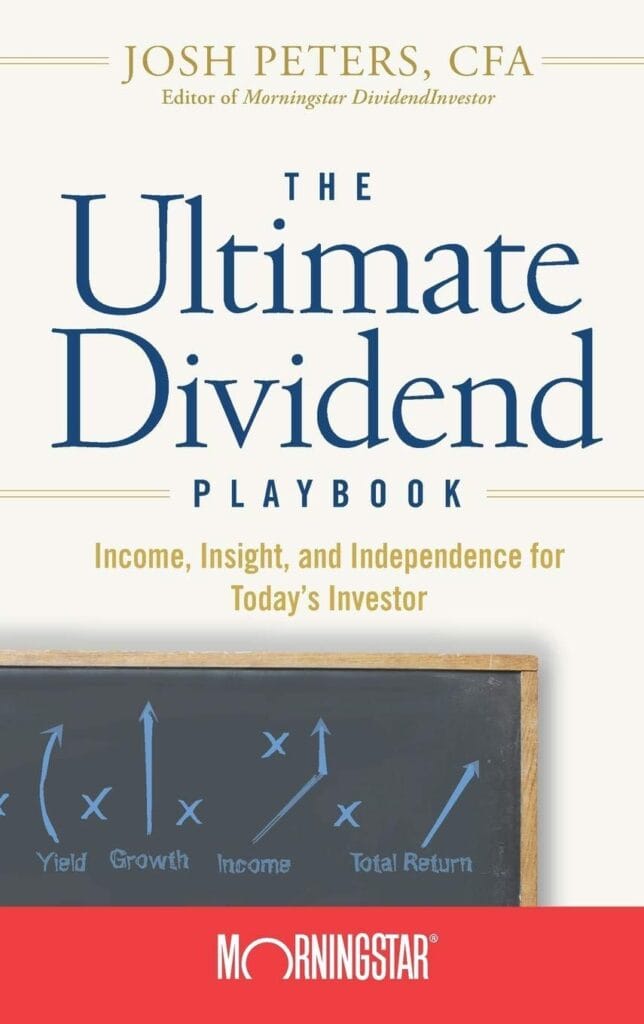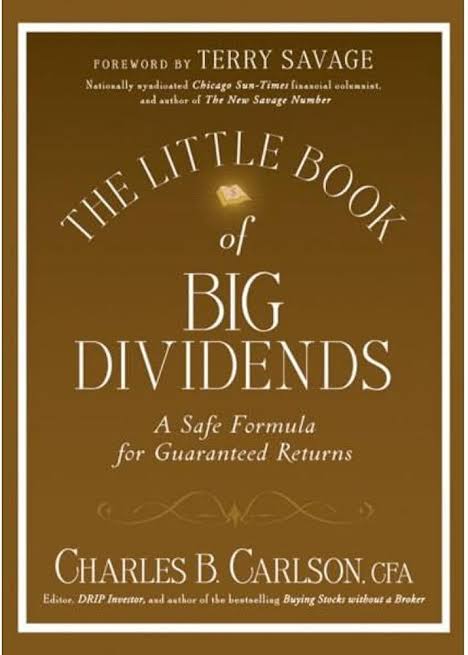Introduction
Embracing Long-Term Investing in Uncertain Markets
In today’s fast-paced financial environment, where short-term speculation often grabs headlines, many investors are turning to long-term investing as a reliable strategy for sustainable wealth creation.
One critical element that has gained attention is dividends in long-term investing. By focusing on companies that distribute regular dividend income, investors can benefit from not only potential capital appreciation but also a steady cash flow, helping them navigate market volatility.
Understanding the Role of Dividends
Dividends are an important aspect of dividend investing. When companies earn profits, they often share a portion of their profits with shareholders as dividends, signaling corporate health and rewarding investors. For those aiming to construct a long-term investment portfolio, dividends offer a dual advantage: they provide income stability and contribute to overall growth through compounding dividends when reinvested.
Harnessing Dividends for Sustainable Wealth
In this article, we will explore how dividends in long-term investing can be a cornerstone for building a strong portfolio. By reinvesting dividends through strategies like Dividend Reinvestment (DRIP), investors can experience accelerated growth.
We will also discuss how dividend growth acts as an inflation hedge, the importance of portfolio diversification, and how integrating high-yield dividend stocks and dividend growth companies can lead to sustainable wealth creation over time. Furthermore, we will examine tax-efficient dividend strategies that can help maximize your net returns.
Table of Contents
Why Dividends Matter in Long-Term Investing?
The Magic of Compounding Dividends
What is Compounding?
The concept of compounding is central to dividends in long-term investing. When dividends are reinvested using Dividend Reinvestment (DRIP) plans, they purchase additional shares, thereby generating more dividends in the future. This snowball effect—where the reinvested dividends continue to compound—can significantly boost overall returns over a long period.
Historical Perspective
Studies comparing dividend-paying companies with those that do not distribute dividends consistently show that the former often delivers superior total returns. This is largely due to the power of compounding dividends. As reinvested dividends accumulate, they contribute to a much larger portfolio value over the long term.
Income Stability for Peace of Mind
One of the most attractive features of dividends in long-term investing is the steady income stream they provide. Whether you’re planning for retirement or simply seeking to mitigate market downturns, consistent dividend payments offer income stability. Even when share prices experience volatility, a robust dividend payout can help smooth out overall portfolio performance.
Dividend Growth as an Inflation Hedge
Over time, inflation can erode the purchasing power of your investment income. However, companies known for dividend growth, such as the renowned Dividend Aristocrats, frequently increase their dividend payouts. This regular increase can act as an inflation hedge, ensuring that the real value of your income stream keeps pace with or even exceeds rising costs.
Behavioral Benefits of Dividend Investing
Investing with an emphasis on dividends in long-term investing encourages a more disciplined approach. Instead of chasing short-term market trends, investors focus on stable, reliable companies. This not only leads to fewer impulsive decisions but also fosters a mindset where steady income and the gradual accumulation of wealth become the primary objectives.
Strategies for Incorporating Dividends into Your Portfolio
A. Balancing Dividend Growth and High-Yield Dividend Stocks
1. Dividend Growth Investing
Dividend growth investing involves targeting companies that have a track record of increasing their dividend payouts over time. While these companies might initially offer a modest yield, their commitment to growing dividends means that your income can significantly increase over the years. Such companies are often financially robust and well-managed, making them ideal for a long-term investment portfolio.
| Pros | Cons |
|---|---|
| Growing income stream over time. | Lower initial yield might not meet immediate income needs. |
| Reflects strong business fundamentals. | Requires patience and thorough research. |
| Benefits greatly from the compounding effect of reinvested dividends. |
2. High-Yield Dividend Stocks
Alternatively, some investors prefer high-yield dividend stocks for their ability to provide a larger upfront income. This strategy can be particularly beneficial for those who rely on dividend income to cover living expenses. However, it’s important to be cautious, as exceptionally high yields may signal unsustainable payout practices.
| Pros | Cons |
|---|---|
| Immediate, substantial income. | Risk of dividend cuts if yields are unsustainably high. |
| Useful for generating cash flow in retirement. | May require deeper analysis to ensure long-term viability. |
Also Read:- How to Identify High-Dividend-Yield Stocks in India?
B. Sector and Geographic Diversification
Portfolio diversification is a key element of successful long-term investing. Certain sectors, like utilities and consumer staples, are known for their consistent dividend payouts, regardless of economic conditions. In addition, considering global opportunities by investing in international dividend stocks can spread risk across different markets and currencies, providing further stability.
C. Balancing Income and Growth
While dividends provide reliable income, a successful portfolio should also include growth-oriented investments. Integrating both dividend investing and growth stocks can offer the best of both worlds: the steady income from dividends and the capital appreciation potential from growth sectors, such as technology or emerging markets.
D. Tax-Efficient Dividend Strategies
Tax considerations play a significant role in the overall success of dividends in long-term investing. Different jurisdictions treat dividend income in various ways, and using tax-efficient dividend strategies—such as holding dividend-paying stocks in tax-advantaged accounts—can help preserve more of your returns. Always consult with a tax professional to align your strategy with your personal financial situation.
What are the Mistakes Beginners Make While Dividend Investing?
The Risk of Tracking Unsustainable Yields
One common mistake in dividend investing is chasing overly high yields without considering the company’s underlying fundamentals.
While a high yield might seem attractive, it can sometimes be a red flag for a company facing financial distress—a phenomenon often referred to as a dividend trap. It’s important to evaluate the payout ratio and overall business health before investing.
The Importance of Valuation
Even when a company offers consistent dividends, buying at an inflated price can undermine the benefits of dividends in long-term investing.
Looking at valuation metrics like the price-to-earnings (P/E) ratio and price-to-book (P/B) ratio can help ensure that you are not overpaying for a dividend stock. Overvaluation can damage future returns, no matter how stable the dividend payments may be.
Ignoring Reinvestment Opportunities
Failing to reinvest dividends is one of the most common mistakes among investors. The true power of compounding dividends comes from reinvesting the cash payouts back into your portfolio. Utilizing Dividend Reinvestment (DRIP) programs ensures that every dividend income is working to build your portfolio’s future value rather than being spent elsewhere.
The Future of Dividends in Long-Term Investing
A. Navigating Rising Interest Rates
With interest rates on the rise, fixed-income securities become more attractive, potentially impacting the attractiveness of dividend stocks in the short term.
However, many investors remain confident in dividends in long-term investing due to the dual benefit of income and potential capital gains. Even as bonds offer competitive yields, dividend-paying companies with a strong history of dividend growth continue to serve as an important income source.
B. The Growing Importance of ESG
As more investors incorporate Environmental, Social, and Governance (ESG) criteria into their decisions, many companies with strong dividend investing records are now being evaluated through this lens. Firms with robust ESG profiles are often well-managed and financially stable, supporting consistent dividend policies that align with sustainable investment strategies. This trend enhances the appeal of dividends, merging ethical considerations with financial benefits.
C. Tech Companies Entering the Dividend Arena
Historically known for rapid growth and reinvesting profits back into innovation, many tech giants are now embracing dividends. Companies like Apple and Microsoft, once solely growth-oriented, are paying dividends, offering investors both capital appreciation and a steady income stream. This evolution reflects a broader trend where even sectors traditionally seen as high-growth are becoming key players in dividends in long-term investing.
How to Plan Your Long-Term Investment Strategy with Dividends
A. Integrating Dividend Investing into Your Overall Plan
A successful long-term investment portfolio should be built on a balanced mix of income-generating and growth-oriented assets.
By including both dividend growth stocks and high-yield dividend stocks, you can enjoy the best of both worlds: the stability and income of dividends alongside the opportunity for significant capital gains.
B. The Role of DRIP in Building Wealth
Setting up a Dividend Reinvestment (DRIP) plan is one of the simplest yet most powerful strategies for harnessing the potential of compounding dividends. Automatic reinvestment ensures that every payout contributes to acquiring additional shares, which in turn generate more dividends. Over time, this cycle accelerates your journey towards sustainable wealth creation.
C. Balancing Risks and Rewards
While dividends provide attractive benefits, it is essential to manage risk through portfolio diversification. Diversifying across sectors—such as utilities, consumer staples, healthcare, and even technology—can decrease risks associated with economic cycles.
Additionally, exploring global opportunities can further enhance your portfolio’s resilience by spreading exposure across various markets and currencies.
D. Employing Tax-Efficient Dividend Strategies
Tax considerations are an integral part of any investment strategy. By adopting tax-efficient dividend strategies, such as holding dividend-paying stocks in tax-advantaged accounts, you can minimize your tax liabilities and keep more of your hard-earned income. Always work with a tax professional to tailor these strategies to your specific financial situation and local regulations.
Conclusion
A. The Lasting Impact of Dividends in Long-Term Investing
The journey of dividends in long-term investing is one of steady income, disciplined reinvestment, and patient wealth accumulation. By focusing on companies with a history of dividend growth and a commitment to returning value to shareholders, investors can build a long-term investment portfolio that not only withstands market volatility but also thrives over time.
B. A Balanced Approach for a Resilient Portfolio
Integrating dividends—whether through high-yield dividend stocks or companies renowned for their dividend growth—is not just about generating immediate income. It’s about establishing a strategy that emphasizes income stability, effective portfolio diversification, and the magic of compounding dividends. These elements work together to form the backbone of a strategy aimed at sustainable wealth creation.
C. Taking the Next Step
Now is the time to evaluate your current portfolio and consider how dividends in long-term investing can play a role in your overall strategy. Whether you decide to implement a Dividend Reinvestment (DRIP) program, explore tax-efficient dividend strategies, or simply increase your exposure to reliable dividend payers, each step brings you closer to a more resilient, diversified investment future.
By taking a measured, informed approach to dividend investing, you position yourself to not only enjoy consistent returns but also to build lasting wealth in an ever-changing economic landscape.
Additional Resources for Dividend Investors
- DRIP Calculators: Utilize online tools to project how reinvesting dividends can accelerate the growth of your long-term investment portfolio.
- Recommended Reading:

The Ultimate Dividend Playbook by Josh Peters

The Little Book of Big Dividends by Charles B. Carlson
In summary, dividends in long-term investing offer a powerful, multifaceted approach to building wealth. By leveraging the principles of dividend investing, integrating both dividend growth and high-yield dividend stocks, and adopting tax-efficient dividend strategies, you can create a well-rounded portfolio that delivers both stability and growth over the years.
Whether you’re a seasoned investor or just starting out, the consistent income and compounded returns provided by dividends are key components in achieving financial success and security.
Take the next step in your investing journey by exploring these strategies, setting up DRIPs, and continually diversifying your assets. With diligence and patience, you can harness the full potential of dividends to secure a prosperous future.
Disclaimer: This article is for informational purposes only and does not constitute investment advice. Please consult a financial advisor before making any investment decisions.